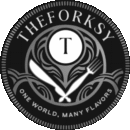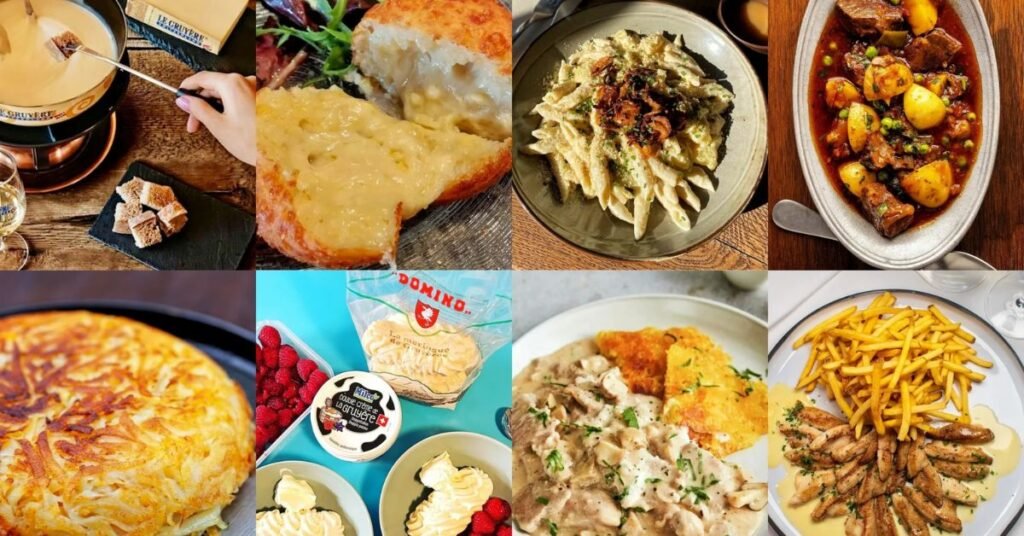Food is one of the best ways to explore a country’s culture, and Switzerland offers a delicious mix of traditions and flavors. Known for its mountains, chocolates, and cheese, Swiss cuisine goes far beyond these stereotypes. From hearty meals made to endure cold winters to light and fresh dishes celebrating local produce, Swiss food is both comforting and diverse.
In this guide, we will explore the best Swiss foods that showcase the country’s rich heritage. You’ll discover traditional recipes, world-famous dishes, authentic meals, and even seasonal specialties like Swiss Easter food. Whether you’re planning a trip, exploring global cuisine, or cooking at home, this article will give you a complete introduction to Swiss food culture.
Traditional Swiss Food
Traditional Swiss food reflects the country’s Alpine roots and diverse regional influences. Dishes are often hearty, designed to provide energy for people living in cold climates and mountainous regions.
One of the most iconic traditional Swiss foods is fondue, a communal dish of melted cheese served with bread cubes for dipping. This dish is deeply tied to Swiss culture and is enjoyed especially during winter.
Another classic is raclette, where melted cheese is scraped over boiled potatoes, pickles, and onions. Originating from the Valais region, it’s a dish that brings people together around the table.
Other traditional favorites include älplermagronen, a Swiss take on macaroni made with pasta, potatoes, cream, onions, and cheese, often served with applesauce. This simple yet filling dish is a staple in Swiss mountain homes.
Famous Swiss Food
Some Swiss foods are famous worldwide for their taste and cultural importance. Swiss chocolate is at the top of the list, admired globally for its quality and craftsmanship. Visitors to Switzerland often indulge in chocolate tours and tastings.
Swiss cheese is equally renowned. Varieties like Emmental, Gruyère, and Appenzeller are celebrated both within Switzerland and abroad. These cheeses are not only enjoyed on their own but also form the base of many dishes.
Zürcher Geschnetzeltes, thinly sliced veal in a creamy white wine sauce, served with rösti, is another famous Swiss food, especially popular in Zurich. It combines elegance with hearty flavors.
Rosti Swiss Food
Rösti is one of the most beloved Swiss foods. Originally a farmer’s breakfast from the Bern region, this crispy potato dish has become a national favorite. Made with grated potatoes fried until golden brown, rösti is often served as a side dish with meats, sausages, or Zürcher Geschnetzeltes.
Rösti is versatile and can also be topped with cheese, bacon, or vegetables. It’s simple yet incredibly satisfying, symbolizing Swiss comfort food at its best.
Classic Swiss Food
Classic Swiss food often combines simplicity with rich flavors. Saffron risotto from Ticino, influenced by Italian cuisine, is a staple in the southern part of the country. Its bright color and aroma make it unique.
Polenta, also from the Ticino region, is another classic dish served with stews or grilled meats. This reflects the blending of Swiss and Italian culinary traditions.
Zopf, a braided bread enjoyed on Sundays, is a classic Swiss breakfast food. Served with butter, honey, or cheese, it represents comfort and tradition.
Authentic Swiss Food
Authentic Swiss food is rooted in local ingredients and regional traditions. Bündner Nusstorte, a nut tart from Graubünden, showcases the use of local nuts and caramelized filling.
In the German-speaking part of Switzerland, Birchermüesli is an authentic creation. This healthy mix of oats, fruits, and nuts, invented by Dr. Maximilian Bircher-Benner, has become a global breakfast favorite.
Authenticity in Swiss cuisine often comes from using fresh, local ingredients, seasonal produce, and recipes that have been part of Swiss households for centuries.
Swiss Food Culture
Swiss food culture is shaped by the country’s geography and multicultural identity. With influences from Germany, France, and Italy, Swiss cuisine is diverse and regionally distinct.
Meals are often social, with dishes like fondue and raclette designed to be shared. Seasonal festivals and traditions also play a significant role in Swiss food culture.
Food in Switzerland reflects practicality, comfort, and a deep respect for quality. From mountain chalets to city restaurants, Swiss food brings people together in both casual and festive settings.
Capuns Swiss Food
Capuns is one of the most unique Swiss foods, originating from Graubünden. It consists of spätzle dough mixed with dried meat, wrapped in Swiss chard leaves, and simmered in broth or cream. This dish is a delicious example of regional Swiss creativity.
Capuns is often served with grated cheese on top, adding richness and flavor. It’s less known outside Switzerland but highly cherished within the country.
Swiss Food Dishes
Swiss food dishes cover a wide range of tastes, from hearty stews to sweet desserts. Kalbsgeschnetzeltes, Schnitzel, and bratwurst are popular meat dishes.
On the sweeter side, Nidlechueche, a creamy custard tart from the canton of Fribourg, is a beloved dessert. Meringues with double cream from Gruyère are also classic Swiss indulgences.
Regional dishes like Malakoff (deep-fried cheese balls) from Vaud show the playful side of Swiss cooking.
Delicious Swiss Food
Delicious Swiss food is everywhere, from street vendors to fine dining restaurants. One particularly delicious dish is Älplermagronen, combining macaroni, potatoes, cream, and onions into a comforting meal.
Swiss Easter food also brings delightful flavors, with festive breads and sweet treats. Seasonal fruits, fresh cheeses, and pastries highlight the joy of Swiss celebrations.
Whether it’s a savory cheese dish or a sweet pastry, delicious Swiss foods highlight the country’s balance between tradition and taste.
Swiss Easter Food
Swiss Easter food is tied to tradition and celebration. Osterfladen, a sweet Easter tart filled with rice pudding or semolina cream, is a favorite during the holiday season.
Decorated eggs and special Easter breads are also part of the festive menu. In many households, Easter brunches include a mix of savory and sweet dishes, showcasing Swiss hospitality.
Easter food traditions emphasize family gatherings and the joy of seasonal ingredients.
Practical Takeaways
Exploring Swiss food is not just about eating—it’s about experiencing culture. If you want to enjoy Swiss cuisine at home, start with simple dishes like rösti or fondue. These recipes are accessible and bring authentic flavors to your table.
Pairing foods is also key: enjoy raclette with pickles and potatoes, or Birchermüesli with fresh seasonal fruits. This enhances the flavors and gives you a taste of Swiss food culture.
Travelers should explore regional specialties, as each canton offers something unique. From Ticino’s risotto to Graubünden’s capuns, every region tells its story through food.
Conclusion
The best Swiss foods showcase tradition, authenticity, and diversity. From world-famous cheese and chocolate to hearty meals like rösti and capuns, Swiss cuisine offers something for everyone.
Swiss food is about more than taste—it’s about culture, tradition, and togetherness. Whether you’re visiting Switzerland or cooking at home, exploring these dishes is a journey into the heart of Swiss heritage.
Embrace the flavors, share the meals, and celebrate the joy of Swiss food—it’s an experience you won’t forget.
FAQs
1. What are the most traditional Swiss foods?
Some of the most traditional Swiss foods include fondue, raclette, rösti, älplermagronen, and Zopf bread. These dishes reflect the Alpine lifestyle and regional traditions.
2. What Swiss food is most famous worldwide?
Swiss chocolate and Swiss cheese are world-famous. Dishes like Zürcher Geschnetzeltes with rösti are also well known internationally.
3. What is rösti in Swiss cuisine?
Rösti is a crispy potato dish originally eaten for breakfast by farmers in Bern. Today, it’s a national favorite, often served with meats, cheese, or vegetables.
4. What is capuns in Swiss food culture?
Capuns is a specialty from Graubünden made of spätzle dough with meat, wrapped in Swiss chard leaves, and simmered in cream or broth. It’s a unique regional dish.
5. What foods are eaten in Switzerland during Easter?
During Easter, Swiss people enjoy Osterfladen (a sweet tart filled with rice or semolina), decorated eggs, festive breads, and seasonal desserts.
6. How does Swiss food culture stand out?
Swiss food culture is diverse, influenced by German, French, and Italian cuisines. Meals are often social, with dishes like fondue and raclette designed for sharing.

